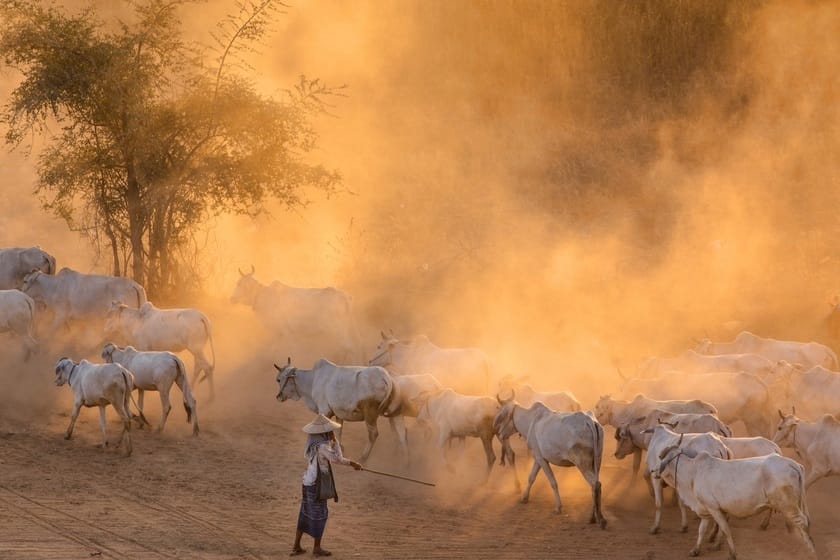The hottest years ever
The hottest years ever. Facts, overviews and state of the climate
The climate crisis has become a pressing issue for humanity, with many scientists and environmentalists emphasizing the urgent need for action. The increase in global temperatures over the past few decades has been attributed to human activities, particularly the burning of fossil fuels, deforestation, and industrial processes. These activities release greenhouse gases into the atmosphere, trapping heat and causing the planet to warm. Data from the National Oceanic and Atmospheric Administration (NOAA) shows that each decade since the 1980s has been warmer than the previous one, highlighting a concerning trend that demands our attention.
This report confirmed what many had feared: climate change is not a distant threat, but a present reality impacting our weather patterns, ecosystems, and even human health. For instance, extreme weather events, such as hurricanes, wildfires, and droughts, have been linked to changing climate conditions. These phenomena not only have devastating effects on communities but also strain emergency services and resources.
NASA’s findings for 2020 highlighted that the planet’s average surface temperature was about 1.84 degrees Fahrenheit warmer than the 20th-century average. This increase is concerning as it indicates that we are approaching critical thresholds that could trigger irreversible changes in our climate systems. Furthermore, 2020 was marked by unprecedented heatwaves that impacted various regions, causing heat-related illnesses and exacerbating existing health disparities.
According to National Geographic, climate change poses risks not only to biodiversity but also to food security. As temperatures rise, agricultural yields are expected to decline, leading to increased food prices and potential shortages. This situation can create a ripple effect, impacting economies and leading to social unrest in vulnerable regions.
The impacts of climate change are not uniform; they vary by geography and community. For example, coastal areas face rising sea levels, while inland regions deal with increased flooding and droughts. This uneven distribution of climate change effects makes it vital for governments and organizations to tailor their response strategies to address local needs and vulnerabilities.
In light of these findings, individuals can play a crucial role in combating climate change. Simple actions, such as reducing energy consumption, using public transportation, and advocating for renewable energy sources, can contribute significantly to lowering carbon footprints. Community involvement and education about climate-related issues are essential for fostering a society that values sustainability and environmental stewardship.
It’s essential to recognize that each individual’s efforts, while seemingly small, can aggregate to produce significant change. Sharing knowledge and encouraging others to adopt environmentally friendly practices can create a collective impact. Initiatives such as tree planting, recycling drives, and conservation projects can engage communities and raise awareness about the importance of preserving our planet.
The imagery of a shepherdess leading her cow herd in Bagan, Myanmar, captures the essence of our connection to nature. As we face climate change, moments like these remind us of the beauty of our environment and the need to protect it. Through conservation efforts and sustainable practices, we can ensure future generations inherit a healthy planet.
As we reflect on the data and predictions surrounding climate change, it’s crucial to engage in meaningful dialogue and action. Whether through community initiatives or personal lifestyle changes, each step towards sustainability counts. The future of our planet depends on the choices we make today, and together, we can strive to transition towards a greener, more sustainable world, acknowledging that 2020 was indeed one of the Hottest years recorded, setting a precedent for the years to come.
Ultimately, climate change is a global challenge that requires collective action. Governments, businesses, and individuals must work together to implement solutions that mitigate climate-related risks. This includes investing in renewable energy, supporting sustainable agriculture, and advocating for policies that protect our natural resources. Only through a unified approach can we hope to address the root causes of climate change and build a more resilient future.
References
2020 the hottest year according to NASA
5 Key takeaways from National Geographic
The last years were the hottest years recorded
Follow Up the state of the climate
Share your own facts and comment. Thank you!

Take care of the trees around you, please! They provide us with oxygen, shadow and most
Invest in your future
Take time to learn
Embark on your journey in affiliate marketing and website creation alongside an incredible community and myself. Invest in your future by dedicating time to learn and earn. Take all the time you need to master the basics before aiming higher. Give it a try and sign up for free. You won't regret it! Discover the possibilities for yourself...


